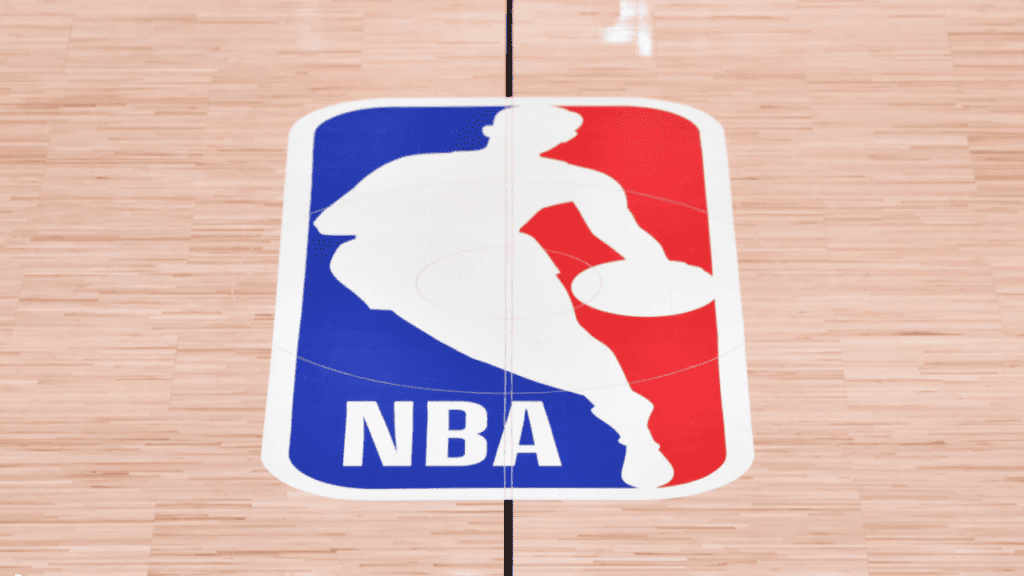The NBA is short for the National Basketball Association, the major professional basketball league in North America. The name was decided in 1949, when two different professional basketball leagues, the Basketball Association of America (BAA) and the National Basketball League (NBL), decided to merge. The NBA, which recognizes the BAA as its origin, decided to change the title at the time of the merger, reportedly to honor the merger and to avoid legal complications. While the NBA is called “national”, it is technically an international/multinational league due to 1 team being based in Canada; the remaining 29 teams are based in the United States, where the league originated.

Why does the NBA recognize the BAA but not the NBL?
The NBA was founded in 1949, but its official history extends back a few years to 1946, when the BAA was founded. The NBL was a relatively older league compared to the BAA, but the BAA had a grander vision by establishing their teams in major cities. Both leagues saw teams switching back and forth, as the talent level in the leagues was generally the same. However, most likely due to financial reasons, NBL teams began joining the BAA, until all of them had joined in the official merger to form the NBA.
When the merger occurred, the new NBA was still governed by the old BAA commissioner Maurice Podoloff and the rest of the BAA governing body. Therefore, the BAA retained power in a sense. The BAA considered the joining of the NBL teams to form the NBA as an expansion of the BAA rather than a merger (and therefore the subsequent name change could be considered a rebrand). The three-year history of the BAA and the statistics are counted as part of the NBA, whereas NBL history and statistics are not counted. As for the particular reason why the NBL has been shunned from the NBA’s history is still unclear, it could possibly be chalked down to internal politics at the time of the merger.
Did the NBA expand after the BAA-NBL merger?
Yes, the NBA added a few more teams since the BAA-NBL merger which founded the league. The inaugural NBA season included 17 teams, and the league now includes 30 teams. Many teams folded in the early years of the league, and expansion became less common as the league became more settled in the last 50 years. A major expansion was the merger of the American Basketball Association (ABA) in 1976.
What does the NBA’s governing body do?
When referring to the NBA, most think of the basketball teams and the players. But the NBA is an organization, with its own set of rules, objectives, strategies, and other activities. The NBA has a governing body, with high-level executives and other various staff that manage these activities, while the franchises also have their activities alongside the basketball itself.
At the top sits the NBA Commissioner, who acts as the CEO and president of the NBA. The Commissioner is the representative of the NBA, who acts in the best interest of the league and its vision. The Commissioner is elected by the board of governors, which is made up of the owners of the NBA franchises. The current NBA Commissioner is Adam Silver, who has been in the role since 2014.
The NBA’s governing body, led by the Commissioner, is responsible for managing the product, which is the basketball itself. This includes scheduling games, training and providing referees, and a host of other activities to ensure that the regular season and postseason go smoothly. In the offseason, the NBA manages the financials of teams, including setting salary caps and luxury thresholds, and every few years they also have collective bargaining agreement (CBA) talks with the NBA Players Association (NBAPA).
On the marketing side, the NBA is occupied with expanding the league’s popularity and offerings domestically and internationally, by penetrating already-entered markets and entering new markets. This is to increase and diversify the NBA’s and its teams’ revenue streams (which in turn increases the salaries of the players).
Because the NBA governing body is a separate entity from the franchises and the players, their interests do not always align and conflict can arise. The NBA acts as an overseer of the franchises and the players, and is responsible for dishing out warnings, fines, and other forms of punishment where violations have occurred. If there is a serious breakdown in negotiations, such as a failure to agree on CBA terms with the NBAPA and the owners, a lockout can occur.
All in all, the NBA’s governing body has been very successful in carrying out its activities. Global popularity of the league is on the rise, as the NBA has successfully entered and penetrated various international markets. The NBA just surpassed $10 billion in revenue for the 2022/23 season, breaking its own record. The relationship between the governing body, the owners, and the players seems to be strong as of now, with the previous CBA agreement having been signed without a lockout. Current NBA Commissioner Adam Silver has also been praised by many inside and outside the league for handling the role exceptionally.
The NBA is achieving success after success in the past few years, reaching new highs every year. The newfound levels of popularity and revenue are the result of strong leadership by the NBA’s governing body, headed by NBA Commissioner Adam Silver. Looking back to the “Wild West” days of professional basketball just three quarters of a century ago reveals a different story, with many different leagues vying for sustained success. The BAA seemed to have prevailed early on, and remained relatively unchallenged as it grew into the NBA as we know it today.
